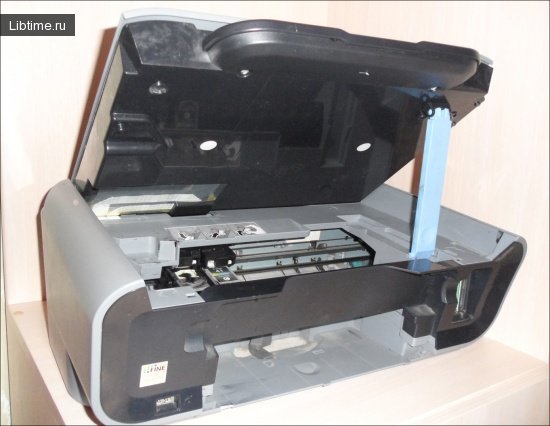A hard disk drive is
The first commercially available 16 kbyte hard disk drive (HD) was released by IBM back in 1973 and contained 30 magnetic cylinders with 30 tracks on each. Sharp-tongued developers recognized the similarity of these numbers to the brand name "30/30", which corresponds to the name of the weapon - "winchester". 
The surface of such a disk is covered with a thin layer of substance, which is able to retain residual magnetization after exposure to an external magnetic field. This layer is called the working or magnetic layer and the recorded data is stored on it. A storage device consists of these elements.
- Rotating drive disks that are mounted on a common vertical axis.
- Read/write heads with their own drive.
The main quality criterion is the surface density of recording. The modern indicator is 60-80 Gbytes/platter.
Hard disk structure
Any hard disk drive consists of three main blocks. So, let's consider what are the components of the hard disk structure.
The first block - actually, the information storage itself - one or more glass (or metal) disks. The disk structure looks like this: the magnetic surface of each disk is divided into concentric"tracks", which, in turn, are divided into segments - sectors.
Along with tracks, which have their own number, and sectors, there are cylinders. A cylinder is a set of all tracks that coincide with each other vertically on all working surfaces.
Thus, to find out how many cylinders a hard disk contains, you simply multiply the number of tracks by the total number of working surfaces. During low-level disk formatting, which is performed at the factory, areas are created at the beginning and end of each sector that contain information about their numbers and other information (service information).
The sector size is 571 bytes, of which 512 bytes are allocated for data useful for the user, the others - for the header (header) or prefix, which determines the beginning and number of the sector and the end (trailer) or suffix, where the checksum necessary to check the safety of the disk is recorded. 
Each working surface of the hard disk corresponds to one read head, and they are positioned vertically in a precise column. This means that at any given time, all heads are on tracks with the same number. That is, they work within one cylinder.
The third block includes electronic stuffing - microcircuits responsible for data processing, correction of possible errors and control of the mechanical part, as well as cache memory microcircuits.
A cluster is the smallest area of a disk that is allocated for a file or a part of a file. Each file occupies a disk space that is equal to an integer number of clusters. Typically, a cluster consists of several sectors.
For hard disks, the cluster size is determined during formatting and depends on the operating system version and disk size. But disk space is occupied inefficiently.
For example, you need to save a 500 byte file. Knowing that each file can occupy space on a whole number of clusters, then in this case one cluster will be occupied. The file will be written with a loss of disk space.
Qualitative characteristics of a hard disk drive
Sector search time. Sector search time (latency time) is the average time required for a sector to be found under the head after it has been brought to the track. The average search time is equal to half of the disk rotation period and is calculated by the formula:
Average search time = 1/(number of motor revolutions per second). That is, at 7200 rpm the search time is 4.17 ms.
Data read speed and specification. The average data read speed is about 40-45 Mbyte/s. It is considered that the controller on the motherboard of UDMA/33 specification is obliged to provide data reading speed of not less than 33 Mbyte/s. And modern specifications such as UDMA/100 and UDMA/133 should guarantee at least 100 and 133 Mbytes/sec.
The data transfer rate determines the amount of data that can be transferred from the drive to the computer and back in a given amount of time. Two factors determine the data transfer rate:
- The way the drives are connected, that is, the performance of the interface.
- The speed at which the heads read the data.
The read data rate (called the internal data rate and measured in Mbytes/second) can be determined by the formula: Read data rate = number of sectors per track * 512* * disk speed / 1000000.
Disk rotation speed is measured in RPM, 512 is the number of data bytes in a sector.
Average seek time. Average seek time is the average time during which the heads move from one cylinder to another. This figure depends on the design of the head drive and is up to 10 ms.
Average access time. It is defined as the sum of average seek time and delay time and characterizes the average statistical time required to gain access to data recorded on an arbitrary sector.
Disk rotation speed. An indicator directly related to the access speed and data read speed. There are parameters 5400 rpm, 7200 rpm. (IDE); 10000 rpm, 15000 rpm. (SCSI). Hard disks are connected to the motherboard using special cable loops.
File Allocation Table
The file allocation table is an area on the disk where the numbers of clusters that deal with files are entered. This does not include clusters that contain service information (boot sectors, the file placement table itself, and root directory data).
The FAT (File Location Table) file system is popular in Microsoft-manufactured operating systems. A separate file system can be created on each logical disk. Thus, several types of file systems can exist on one hard disk.
Popular file systems
- FAT. This file system is used in MS DOS, Windows 3.x/9.x/2000, ME, XP, OS/2 operating systems.
- HPFS. The name of this file system comes from High Performance File System, which means High Performance File System. It is supported by operating systems OS/2, Windows NT.
- NTFS. The name of this file system comes from Windows NT File System, which means Windows NT/2000 file system, supported by Windows NT/2000, XP operating systems.
Logical disks
It is known that the computer assigns logical names A:, B:, C: to all disks, regardless of their design. The names A:, B: are assigned to floppy disk drives by default. The system logical drive, the one on which the operating system is written, is named C:.
Hard disk space can be divided into partitions and logical drives. Operating systems work with logical disks, not physical disks. Advantages of developing hard drives into multiple logical disks:
- Loss of disk space is reduced.
- Data structuring is simplified.
- Disk defragmentation, virus checking, etc. is simplified.
On one disk you can save working programs, on another - documentation and archives, games (installation files). In the event of a malfunction, the loss of information is minimized. If you do not know what a processor is, we recommend reading this article.


